
应用随机过程 概率模型导论(英文版 第11版)
¥ 40 4.0折 ¥ 99 八五品
仅1件
作者[美]罗斯(Sheldon M.Ross) 著
出版社人民邮电出版社
出版时间2015-03
版次1
装帧平装
货号J-C9-5
上书时间2024-07-08
- 在售商品 暂无
- 平均发货时间 11小时
- 好评率 暂无
- 店主推荐
- 最新上架
商品详情
- 品相描述:八五品
- 字迹画线
图书标准信息
- 作者 [美]罗斯(Sheldon M.Ross) 著
- 出版社 人民邮电出版社
- 出版时间 2015-03
- 版次 1
- ISBN 9787115384744
- 定价 99.00元
- 装帧 平装
- 开本 16开
- 纸张 胶版纸
- 页数 767页
- 正文语种 简体中文,英语
- 原版书名 Introduction to Probability Models 11th Edition
- 丛书 图灵原版数学·统计学系列
- 【内容简介】
-
《应用随机过程 概率模型导论(英文版 第11版)》是一部经典的随机过程著作,叙述深入浅出、涉及面广。主要内容有随机变量、条件期望、马尔可夫链、指数分布、泊松过程、平稳过程、更新理论及排队论等,也包括了随机过程在物理、生物、运筹、网络、遗传、经济、保险、金融及可靠性中的应用。特别是有关随机模拟的内容,给随机系统运行的模拟计算提供了有力的工具。最新版还增加了不带左跳的随机徘徊和生灭排队模型等内容。本书约有700道习题,其中带星号的习题还提供了解答。
《应用随机过程 概率模型导论(英文版 第11版)》可作为概率论与数理统计、计算机科学、保险学、物理学、社会科学、生命科学、管理科学与工程学等专业随机过程基础课教材。
- 【作者简介】
-
Sheldon M. Ross,国际知名概率与统计学家,南加州大学工业工程与运筹系系主任。1968年博士毕业于斯坦福大学统计系,曾在加州大学伯克利分校任教多年。研究领域包括:随机模型、仿真模拟、统计分析、金融数学等。Ross教授著述颇丰,他的多种畅销数学和统计教材均产生了世界性的影响,如《概率论基础教程(第8版)》等。
- 【目录】
-
1IntroductiontoProbabilityTheory
1.1Introduction
1.2SampleSpaceandEvents
1.3ProbabilitiesDefinedonEvents
1.4ConditionalProbabilities
1.5IndependentEvents
1.6Bayes'Formula
Exercises
References
2RandomVariables
2.1RandomVariables
2.2DiscreteRandomVariables
2.2.1TheBernoulliRandomVariable
2.2.2TheBinomialRandomVariable
2.2.3TheGeometricRandomVariable
2.2.4ThePoissonRandomVariable
2.3ContinuousRandomVariables
2.3.1TheUniformRandomVariable
2.3.2ExponentialRandomVariables
2.3.3GammaRandomVariables
2.3.4NormalRandomVariables
2.4ExpectationofaRandomVariable
2.4.1TheDiscreteCase
2.4.2TheContinuousCase
2.4.3ExpectationofaFunctionofaRandomVariable
2.5JointlyDistributedRandomVariables
2.5.1JointDistributionFunctions
2.5.2IndependentRandomVariables
2.5.3CovarianceandVarianceofSumsofRandomVariables
2.5.4JointProbabilityDistributionofFunctionsofRandomVariables
2.6MomentGeneratingFunctions
2.6.1TheJointDistributionoftheSampleMeanandSampleVariancefromaNormalPopulation
2.7TheDistributionoftheNumberofEventsthatOccur
2.8LimitTheorems
2.9StochasticProcesses
Exercises
References
3ConditionalProbabilityandConditionalExpectation
3.1Introduction
3.2TheDiscreteCase
3.3TheContinuousCase
3.4ComputingExpectationsbyConditioning
3.4.1ComputingVariancesbyConditioning
3.5ComputingProbabilitiesbyConditioning
3.6SomeApplications
3.6.1AListModel
3.6.2ARandomGraph
3.6.3UniformPriors,Polya'sUrnModel,andBose-EinsteinStatistics
3.6.4MeanTimeforPatterns
3.6.5Thek-RecordValuesofDiscreteRandomVariables
3.6.6LeftSkipFreeRandomWalks
3.7AnIdentityforCompoundRandomVariables
3.7.1PoissonCompoundingDistribution
3.7.2BinomialCompoundingDistribution
3.7.3ACompoundingDistributionRelatedtotheNegativeBinomial
Exercises
4MarkovChains
4.1Introduction
4.2Chapman-KolmogorovEquations
4.3ClassificationofStates
4.4Long-RunProportionsandLimitingProbabilities
4.4.1LimitingProbabilities
4.5SomeApplications
4.5.1TheGambler'sRuinProblem
4.5.2AModelforAlgorithmicEfficiency
4.5.3UsingaRandomWalktoAnalyzeaProbabilisticAlgorithmfortheSatisfiabilityProblem
4.6MeanTimeSpentinTransientStates
4.7BranchingProcesses
4.8TimeReversibleMarkovChains
4.9MarkovChainMonteCarloMethods
4.10MarkovDecisionProcesses
4.11HiddenMarkovChains
4.11.1PredictingtheStates
Exercises
References
5TheExponentialDistributionandthePoissonProcess
5.1Introduction
5.2TheExponentialDistribution
5.2.1Definition
5.2.2PropertiesoftheExponentialDistribution
5.2.3FurtherPropertiesoftheExponentialDistribution
5.2.4ConvolutionsofExponentialRandomVariables
5.3ThePoissonProcess
5.3.1CountingProcesses
5.3.2DefinitionofthePoissonProcess
5.3.3InterarrivalandWaitingTimeDistributions
5.3.4FurtherPropertiesofPoissonProcesses
5.3.5ConditionalDistributionoftheArrivalTimes
5.3.6EstimatingSoftwareReliability
5.4GeneralizationsofthePoissonProcess
5.4.1NonhomogeneousPoissonProcess
5.4.2CompoundPoissonProcess
5.4.3ConditionalorMixedPoissonProcesses
5.5RandomIntensityFunctionsandHawkesProcesses
Exercises
References
6Continuous-TimeMarkovChains
6.1Introduction
6.2Continuous-TimeMarkovChains
6.3BirthandDeathProcesses
6.4TheTransitionProbabilityFunctionPij(t)
6.5LimitingProbabilities
6.6TimeReversibility
6.7TheReversedChain
6.8Uniformization
6.9ComputingtheTransitionProbabilities
Exercises
References
7RenewalTheoryandItsApplications
7.1Introduction
7.2DistributionofN(t)
7.3LimitTheoremsandTheirApplications
7.4RenewalRewardProcesses
7.5RegenerativeProcesses
7.5.1AlternatingRenewalProcesses
7.6Semi-MarkovProcesses
7.7TheInspectionParadox
7.8ComputingtheRenewalFunction
7.9ApplicationstoPatterns
7.9.1PatternsofDiscreteRandomVariables
7.9.2TheExpectedTimetoaMaximalRunofDistinctValues
7.9.3IncreasingRunsofContinuousRandomVariables
7.10TheInsuranceRuinProblem
Exercises
References
8QueueingTheory
8.1Introduction
8.2Preliminaries
8.2.1CostEquations
8.2.2Steady-StateProbabilities
8.3ExponentialModels
8.3.1ASingle-ServerExponentialQueueingSystem
8.3.2ASingle-ServerExponentialQueueingSystemHavingFiniteCapacity
8.3.3BirthandDeathQueueingModels
8.3.4AShoeShineShop
8.3.5AQueueingSystemwithBulkService
8.4NetworkofQueues
8.4.1OpenSystems
8.4.2ClosedSystems
8.5TheSystemM/G/
8.5.1Preliminaries:WorkandAnotherCostIdentity
8.5.2ApplicationofWorktoM/G/
8.5.3BusyPeriods
8.6VariationsontheM/G/
8.6.1TheM/G/1withRandom-SizedBatchArrivals
8.6.2PriorityQueues
8.6.3AnM/G/1OptimizationExample
8.6.4TheM/G/1QueuewithServerBreakdown
8.7TheModelG/M/
8.7.1TheG/M/1BusyandIdlePeriods
8.8AFiniteSourceModel
8.9MultiserverQueues
8.9.1Erlang'sLossSystem
8.9.2TheM/M/kQueue
8.9.3TheG/M/kQueue
8.9.4TheM/G/kQueue
Exercises
References
9ReliabilityTheory
9.1Introduction
9.2StructureFunctions
9.2.MinimalPathandMinimalCutSets
9.3ReliabilityofSystemsofIndependentComponents
9.4BoundsontheReliabilityFunction
9.4.1MethodofInclusionandExclusion
9.4.2SecondMethodforObtainingBoundsonr(p)
9.5SystemLifeasaFunctionofComponentLives
9.6ExpectedSystemLifetime
9.6.1AnUpperBoundontheExpectedLifeofaParallelSystem
9.7SystemswithRepair
9.7.1ASeriesModelwithSuspendedAnimation
Exercises
References
10BrownianMotionandStationaryProcesses
10.1BrownianMotion
10.2HittingTimes,MaximumVariable,andtheGambler'sRuinProblem
10.3VariationsonBrownianMotion
10.3.1BrownianMotionwithDrift
10.3.2GeometricBrownianMotion
10.4PricingStockOptions
10.4.1AnExampleinOptionsPricing
10.4.2TheArbitrageTheorem
10.4.3TheBlack-ScholesOptionPricingFormula
10.5TheMaximumofBrownianMotionwithDrift
10.6WhiteNoise
10.7GaussianProcesses
10.8StationaryandWeaklyStationaryProcesses
10.9HarmonicAnalysisofWeaklyStationaryProcesses
Exercises
References
11Simulation
11.1Introduction
11.2GeneralTechniquesforSimulatingContinuousRandomVariables
11.2.1TheInverseTransformationMethod
11.2.2TheRejectionMethod
11.2.TheHazardRateMethod
11.3SpecialTechniquesforSimulatingContinuousRandomVariables
11.3.1TheNormalDistribution
11.3.2TheGammaDistribution
11.3.3TheChi-SquaredDistribution
11.3.4TheBeta(n,m)Distribution
11.3.5TheExponentialDistribution-TheVonNeumannAlgorithm
11.4SimulatingfromDiscreteDistributions
11.4.1TheAliasMethod
11.5StochasticProcesses
11.5.1SimulatingaNonhomogeneousPoissonProcess
11.5.2SimulatingaTwo-DimensionalPoissonProcess
11.6VarianceReductionTechniques
11.6.1UseofAntitheticVariables
11.6.2VarianceReductionbyConditioning
11.6.3ControlVariates
11.6.4ImportanceSampling
11.7DeterminingtheNumberofRuns
11.8GeneratingfromtheStationaryDistributionofaMarkovChain
11.8.1CouplingfromthePast
11.8.2AnotherApproach
Exercises
References
Appendix:SolutionstoStarredExercises
Index
相关推荐
— 没有更多了 —









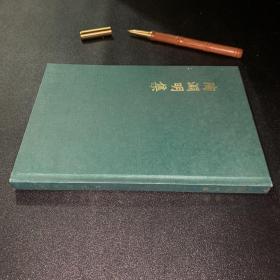

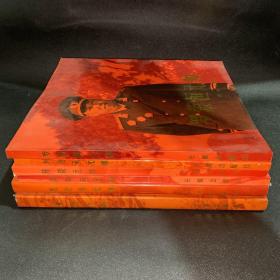
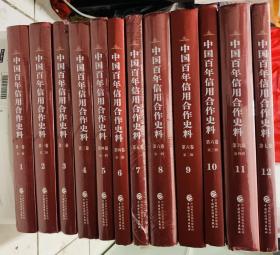
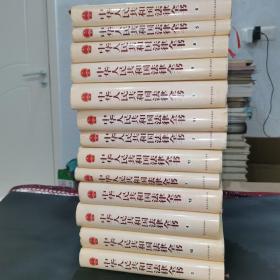
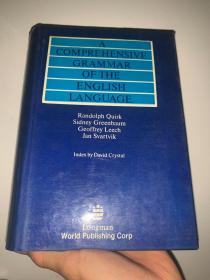











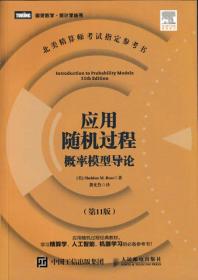






以下为对购买帮助不大的评价